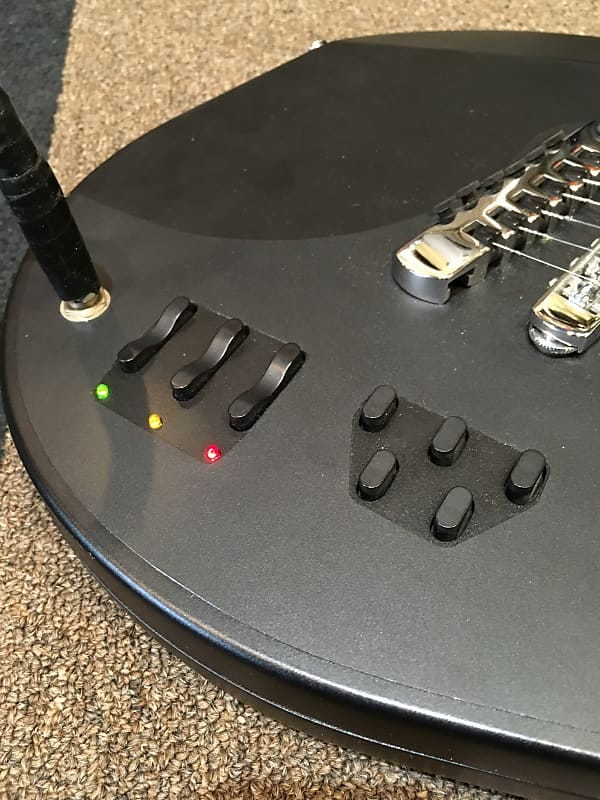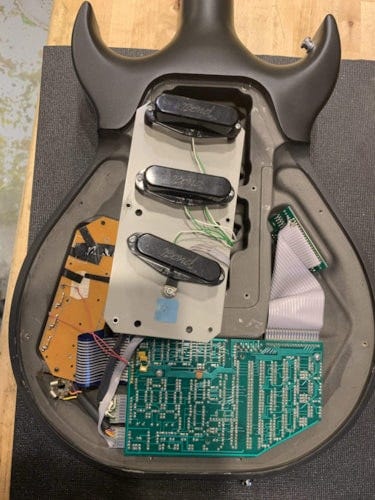Guitar Gavel Lick Of The Week with Keith Amyx- Open string banjo technique
Two-finger Keith presents a quick open string banjo lick that can help with your “hy-bred” pickin’. And it sounds cool! Tab is at the end of the video.
Bond Electraglide
When your last name is Bond and you are a guitar builder, you must build guitars that do something special like shoot a grappling hook, turn into a jetpack, or at the very minimum have a lot of flashing lights.
Developed by Andrew Bond and manufactured in the Scottish town Muir of Ord between 1984 and 1986, the Bond Electraglide guitar was revolutionary in many ways.
One of several radical design concepts is that of the fretboard, often described as “sawtooths”. The fretboard is actually fretless whereas the frets are “stair-stepped” and the strings make contact at the step’s edge, instead of a traditional wire fret. Fretboard construction is accomplished by using a molded phenolic resin on the early models and then changed to aluminum for the last year or so of production. The body and neck are one piece of carbon fiber with a large removeable backplate to access the electronics. Wisely, the fretboard is detachable.
Ovation Guitars tried the aluminum fretboard idea in the mid 1970s and ran into several issues. Not only will aluminum wear down over time, Ovation cast the neck and fretboard in a single unit so the only way to remediate fret wear was to replace the entire neck. They were also known to have warping issues.
Onto the flashing lights… the electronics brought the 80s moon-funk! Two sets of buttons, LED lights, and an LED screen above the bridge offer some hope you could figure out what is going on.
Mission control are the three buttons above the output jack controlling volume, treble, and bass which takes you back to the LED display above the bridge. This shows your levels for each setting, 0-9, all of which are color coordinated (red, yellow, green).
But there’s more… the group of five buttons below the bridge handles pickup selections (the top three) and phase settings (bottom two). To make the magic happen a motherboard was located inside of the carbon fiber body and a bulky external power supply is needed for all the juice it pulls.
All the hardware is Schaller, including the pickups and tremolo.
It’s totally understandable during the height of the mid 1980s with synth guitars and alternative material experimentation this seemed like a really cool idea. It’s also understandable why it never caught on. Andrew Bond’s vision, engineering, and tenacity to put it all together is worthy of significant praise. It’s reported between 1,000 and 1,400 Electraglides were ever produced at an initial MSRP in the neighborhood of £580. How does it sound? If you ask me I’d say it’s a little flat and thin based on the videos I’ve watched…
Famous players include The Edge, Mick Jones, Dave Stewart, Will Sergeant, and David Gilmour had a very early prototype in his collection.
Here’s a pretty cool video covering the Electraglide (skip to 6:00 in).







1 comment
Wow! What an incredible and innovative piece of tech! As a full-fledged, nerd, I approve. it is the complete antithesis of the classics. Thank you.